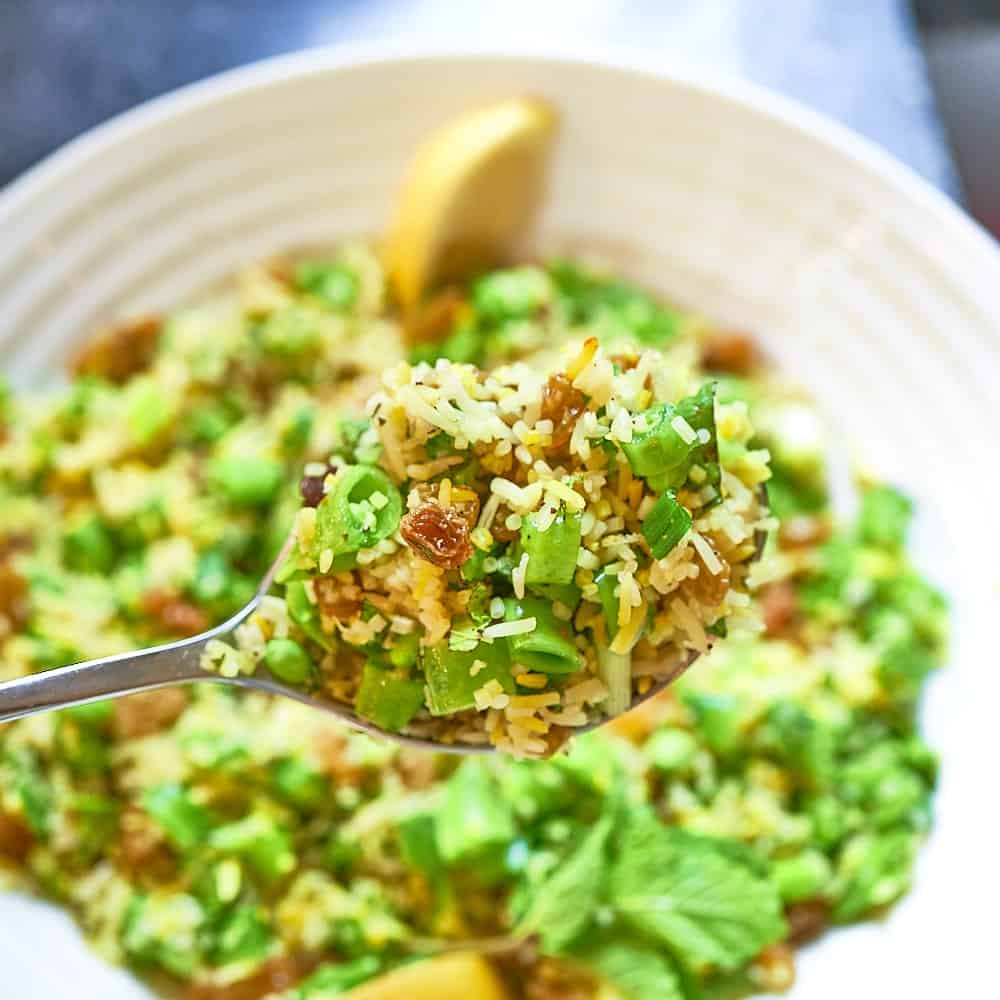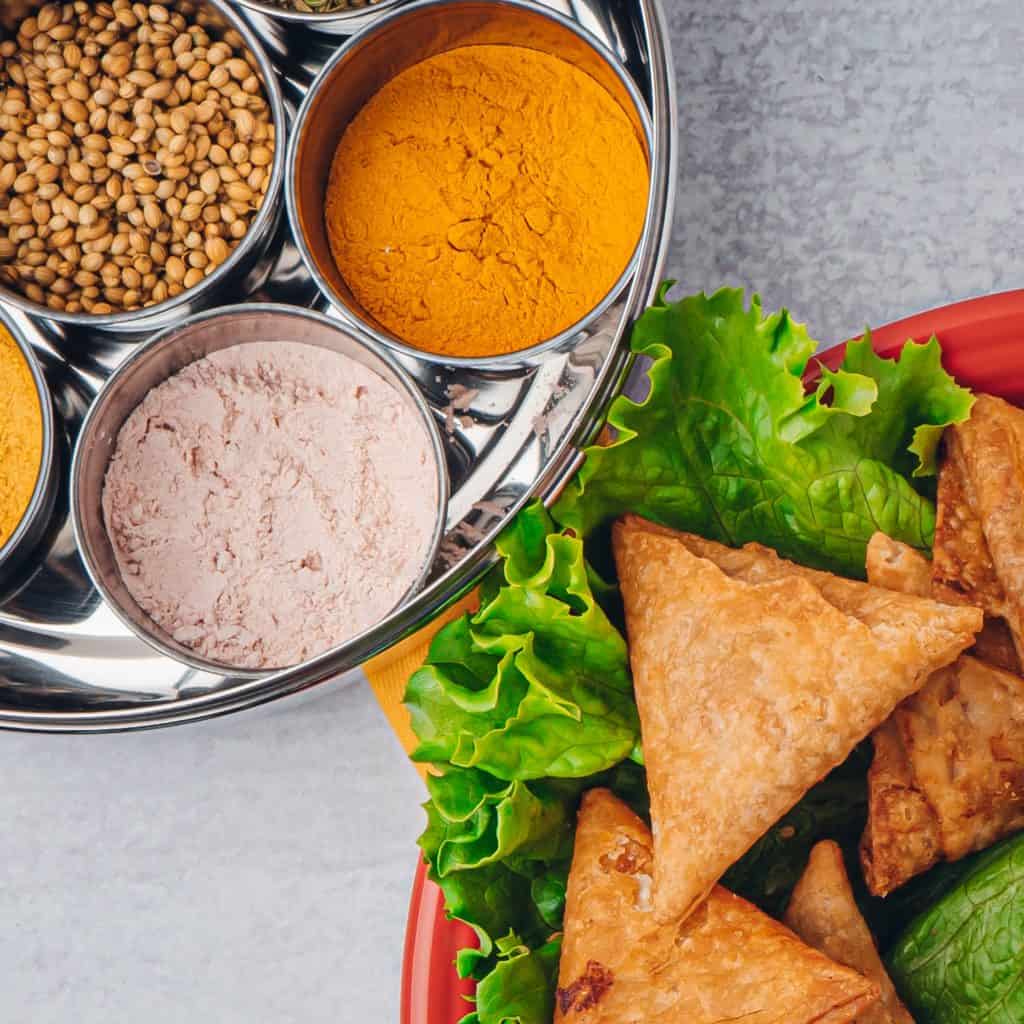A Guide to Vegan Indian Food
Luckily for you (and for all of us), there are plenty of vegan options to choose from within Indian cuisine. Whether cooking for yourself or dining out, you can always make simple substitutions to turn your dish vegan-friendly.

It’s very common to find vegetarian dishes across India, and vegan food isn’t too far off. Vegetarian food is easily found due to the religious belief shared by many Hindus, Jains, and Buddhists living in India. These religions all advocate vegetarianism to some extent, and many vegetarian Indians also do not eat eggs.
With vegetarianism flourishing in Indian culture and vegetables being a staple ingredient in any Indian diet, finding vegan Indian dishes is pretty simple.
How To Know If Something Is Vegan?
Because vegetarianism is practiced for spiritual reasons, it’s common to find 100% vegetarian restaurants across India. If you’re looking for a vegan dish at a vegetarian establishment, you may have to ask a server or look for an indication on the menu as to what’s vegan and what’s not.
In the Western world, it’s much less common to come across a vegetarian Indian restaurant. Because meat is so ingrained within Western culture, it’s difficult for non-meat serving restaurants to succeed, even when run by excellent vegetarian chefs.
So how do you know what is vegan and what’s not on the menu? Well, you can look for a few particular names that will be good indicators of what a dish will consist of.

Ingredients You Should Get To Know:
Vegan eaters often look for a few ingredients to determine whether a dish is right for them or not. Think about how we go for tofu, potatoes, mushrooms, vegetable medleys, and beans to add weight to our meals in the West. Within Indian cuisine, you should keep your eye out for the following names:
- Aloo=potato
- Gobi=cauliflower
- Chana=chickpea
- Matar=peas
- Palak=spinach
- Saag=spinach and mustard greens
- Paneer=cheese
- Ghee= clarified butter
- Korma=a yogurt-based curry (often includes nuts)
- Makhani= buttery
By recognizing paneer, ghee, korma, and makhani, you’ll be able to identify whether a dish is vegan or not easily. You can always make ingredient swaps to create your own vegan Indian food recipes or rely on the ones others have created.
Note that ghee in Indian cooking is common, but it’s often forgotten that cooking agents like clarified butter could keep a dish from being vegan. You may need to clarify with the restaurant.
Vegan Dishes You Can Turn To
There are a few Indian dishes that are traditionally prepared to be vegan, but even if a dish is typically vegan, you should always double-check with your server or the nutrition label to be sure.
Even if you don’t immediately recognize a vegan option or you see a no-go ingredient, there are small requests you can make to create veganized versions of your favorite dishes.
Dosa
Dosa is made with a fermented lentil and rice batter and is pretty much always vegan. The batter is thinly poured onto a pan and cooked until crispy and golden. Dosa can be served plain or with a filling. The most popular variation is the masala dosa, made with a potato and spice filling.
Always be sure to ask if the filling is made with ghee or any other dairy products and that the dosas have been fried in oil rather than ghee.
Biryani
Biryani is a rice dish seasoned with aromatic spices like saffron turmeric, cumin, and ginger. Biryani is typically served with marinated chicken, but restaurants can easily swap out the chicken for other hefty vegetables.
Be sure to ask: Is the saffron cooked in milk? Has the rice been fried in oil or ghee?
Dal
Dal is a comforting dish made from stewed lentils, split peas or pigeon peas, and flavorful spices, and often includes tomatoes, onions, ginger, and garlic for additional flavor. Dal is typically served with rice or Indian flatbreads.
Curries
There’s no one recipe that makes a curry, so you should always ask about ingredients before ordering one.
Be sure to ask: are your curries made with oil or ghee?
Some vegan-friendly North Indian curries include chana masala (chickpea curry in a tomato sauce), aloo gobi (potatoes and cauliflower in a ginger garlic turmeric sauce), baingan bharta (mashed eggplant), bhindi (okra), cabbage, and aloo matar (potatoes and peas in a spiced tomato sauce).
An easy solution for curries and sauces? Turn to Sukhi’s recipes. Every single sauce of Sukhi’s is vegan; from Classic Curry, Coconut Curry, and Mango Chutney to Tandoori Marinade and Tikka Masala. Add coconut milk or a dairy-free alternative to cream and you can have yourself a vegan curry in 15 minutes or less.
Samosa
Samosas are simple yet flavor-packed pastries. These treats are made by stuffing a pastry dough with delicious fillings and then frying them up to be enjoyed as a side dish or snack.
A traditional samosa dough is made with a mixture of salt, butter (not vegan), and maida flour (a white wheat flour comparable to all-purpose flour).
Be sure to ask: Is your samosa dough made with butter?
India’s most popular samosa filling is a spiced potato & pea filling, but you will see other variations like cauliflower, chickpeas, chicken, or even minced lamb.
Be sure to ask: Are your vegetarian samosas also vegan?

Chutney
Chutney is a condiment that you can make out of pretty much any fruit, vegetable, or herb, but spice, sugar, and vinegar are consistently found and enjoyed in every variation. There is a unique non-vegan chutney made with dried meat, but more often than not, chutneys are vegan.
You can enjoy cilantro, mint, tamarind, mango, coconut, tomato, and many other kinds of chutney smeared over your vegan entrees or snacks.
There’s More To Enjoy
Now you know, the possibilities are endless. There are so many Indian recipes that are naturally vegan or can easily be veganized with a few swaps here and there.
Although the rules of cooking are non-existent, there are many dishes integral to Indian cuisine that are traditionally meat or dairy-based. Traditions are cool and all, but the best things in life come from trying something new.
There are always ways you can make substitutions to any meal to accommodate your diet. Remove chicken and yogurt, add in cauliflower and coconut milk, and you’ve got yourself a vegan tikka masala (Yum!). Swap out paneer for tofu and enjoy a vegan version of palak paneer. It’s also 2022, there are tons of plant-based meats that you can easily add into any of Sukhi’s sauces.
Even when on a vegan diet, you can enjoy the full scope of Indian cuisine.
2 responses to A Guide to Vegan Indian Food
Is the substitution of coconut milk for whipping cream in the Chicken Tikka Masala a direct replacement? Does ¼ cup of coconut milk equal ¼ cup of whipping cream? I am vegan and this recipe looks great.
Some canned coconut milks are thicker than the refrigerated ones, so it will depend on which type of coconut milk you are adding. We suggest adding a little at a time until you get the amount of creaminess desired! Let us know how it turns out!